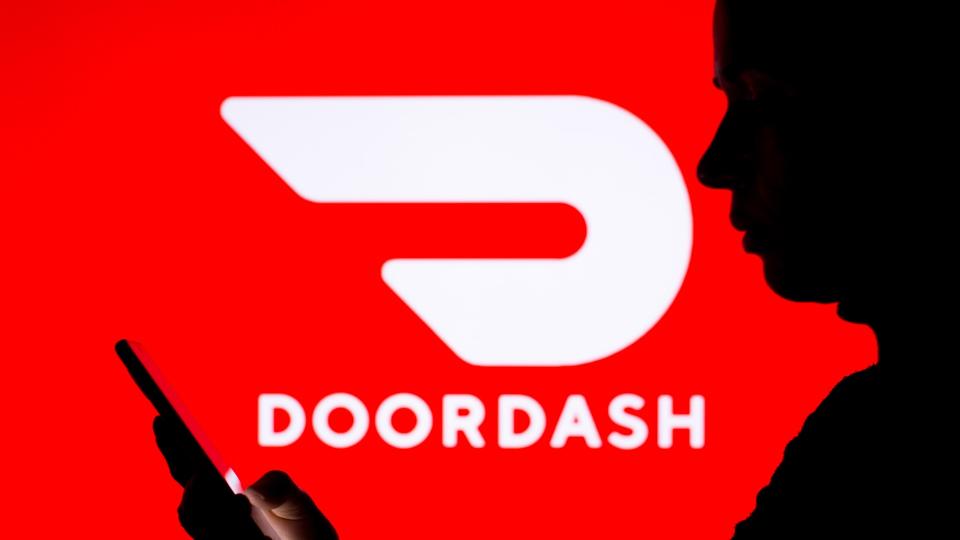Inflation Has Americans Cutting Back on Food Delivery — How Much Is Their Average Savings Per App?

The term “discretionary spending” usually refers to lifestyle “wants” — non-essential pursuits like hobbies, travel and luxury spending. Conversely, non-discretionary “needs” items such as rent, groceries, gas and bills, plus mortgage, car and credit card debt, insurance and healthcare are day-to-day mandatory expenses.
Compare: 8 Grocery Stores With the Best Discounts To Help With Rising Food Costs
Learn: 3 Easy Tips To Turn Your Credit Woes Into Wows
Due largely to the pandemic in 2020, the convenience of ordering food from home vastly improved. But since the outbreak has curtailed, consumers are treating themselves to more expensive social outings dining out at restaurants. Even as Americans have had to become more frugal with their money, food spending slipped further into the discretionary purchase area, even though 90% of Americans claimed to be concerned about food prices, according to a Harris Poll conducted earlier in the year, per CNBC.
According to a recent study by wealth management company Personal Capital, American consumers increasingly frustrated with high food inflation and exorbitant delivery fees are cutting frivolous food spending. An impressive 94% of those polled cut back on at least one form of food delivery or dining over the past year. After cutting back on food spending, 47% are less likely to dine out at a restaurant at least once a week.
On average, Personal Capital found those surveyed saved an estimated $277.37 annually on food delivery and dining out after a year of belt-tightening. Here’s where they’ve saved:
Potential Average Annual Savings by Dining Out and Food Delivery App
Not surprisingly, those who saved the most per month were those who cut back on dining out ($37.60/month) but respondents who cut back on using popular food delivery apps saved big too. Those who decreased their DoorDash deliveries saved almost $30 a month and had the potential of saving around $320 a year.
Dining in a restaurant — $451.20 ($37.60/month)
DoorDash — $322.08 ($26.84/month)
Grubhub — $230.76 ($19.23/month)
Blue Apron — $221.52 ($18.46/month)
Delivery.com — $215.88 ($17.99/month)
Ordering takeout directly from a restaurant — $212.88 ($17.74/month)
HelloFresh — $201.48 ($16.79/month)
Instacart — $163.20 ($13.60/month)
Uber Eats — $156.96 ($13.08/month)
Postmates — $113.28 ($9.44/month)
Across generations, the study identified that millennials were the group who saved the most in one year after cutting back on food spending ($311.88). Gen X respondents were next with $288.13 saved, followed by baby boomers and Gen Z individuals, at $276.18 and $222.26 respectively.
Take Our Poll: How Do You Typically Split the Restaurant Bill?
Survey respondents who earned less than $25,000 saved the most in one year and were able to cut an average of $326.43 from their typical yearly food spending.
Additionally, while 51% of respondents polled said they were saving money for a future dream, 47% had increased delivery charges and reduced disposable income each as their main impetuses for curbing their food spending.
See: Are There Home Delivery Services That Accept SNAP EBT Cards?
Find: 5 Secrets to Avoiding High Food Delivery Charges
Of course, for many, getting food delivery or eating out with friends is their main pleasure expenditure, and they wouldn’t give that up for a bit of savings. In fact, 31% said they weren’t willing to reduce spending on even one food event. When asked what lavish lifestyle purchase was most important to them, an overwhelming 79% of survey takers responded dining out.
More From GOBankingRates
This article originally appeared on GOBankingRates.com: Inflation Has Americans Cutting Back on Food Delivery — How Much Is Their Average Savings Per App?

 Yahoo Finance
Yahoo Finance 